Wellness
Balance
By DANIEL WEISS
Tuesday, August 10, 2021
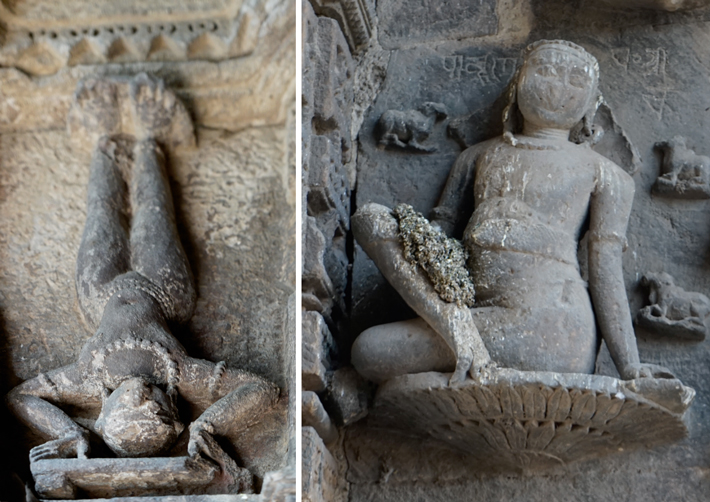 The earliest textual and sculptural evidence of yoga, which came to be practiced in northern and northwestern India and what is today Pakistan, dates to the last few centuries B.C. For at least a millennium afterward, yoga generally involved meditation in the cross-legged lotus position. It was largely practiced by ascetics who saw the body as something to be controlled and subdued, or even mortified, through extreme activities such as standing or holding their arms above their heads for years on end. “It’s quite different from what we understand as yoga nowadays,” says James Mallinson, a scholar of the history of yoga at the University of London’s School of Oriental and African Studies.
The earliest textual and sculptural evidence of yoga, which came to be practiced in northern and northwestern India and what is today Pakistan, dates to the last few centuries B.C. For at least a millennium afterward, yoga generally involved meditation in the cross-legged lotus position. It was largely practiced by ascetics who saw the body as something to be controlled and subdued, or even mortified, through extreme activities such as standing or holding their arms above their heads for years on end. “It’s quite different from what we understand as yoga nowadays,” says James Mallinson, a scholar of the history of yoga at the University of London’s School of Oriental and African Studies.
Around 1,000 years ago, yoga practices that aimed to develop, rather than punish, the body began to appear. Known as hatha yoga, or yoga by means of force, this novel form incorporated new balancing postures that involved standing on one’s head or holding one’s legs up in the air while sitting. “Suddenly, the texts start teaching these physical methods of cultivating the body to make it strong, fit, supple, and lean, but also to harness its vital energies,” says Mallinson.
An early sculptural representation of hatha positions can be found on a gate dating to around A.D. 1230 in the town of Dabhoi in the northwestern Indian state of Gujarat. Hindu deities, yogis, and yoginis are depicted bending their limbs in ways that wouldn’t be out of place at a modern yoga studio. “This is the beginnings of yoga as a wellness tradition,” says Mallinson. “The notion of doing yoga to improve your body and stay healthy seems to appear about a thousand years ago, and from then on, there is a continuum to what we find today.”
Appearance
By MARLEY BROWN
Tuesday, August 10, 2021
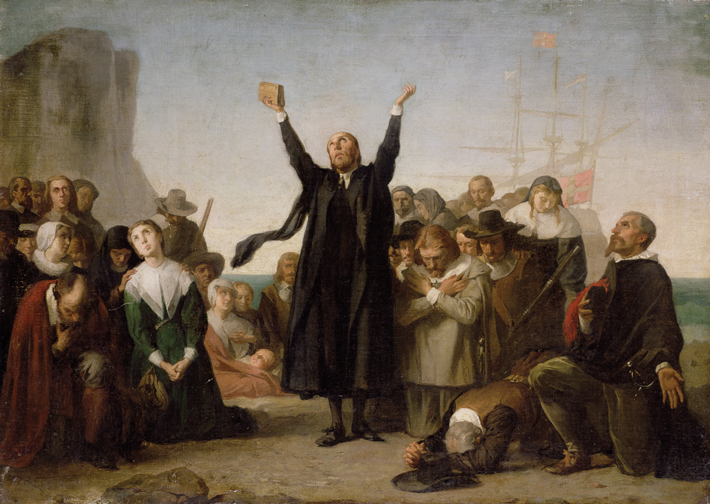
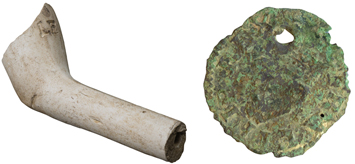 Among the Puritans who settled the Massachusetts Bay Colony in the seventeenth century, drunkenness, excessive tobacco consumption, and conspicuous displays of prosperity such as extravagant dress were strictly forbidden. In a society not given to self-indulgence, wellness could take paradoxical forms. Harvard University archaeologist Diana DiPaolo Loren says that Puritans may have genuinely felt at their best under conditions of self-imposed privation, which were intended to earn them eternal salvation. “In Puritanism, to be healthy means to be right with God,” she says. “The threat of uncleanliness and of the devil would have been omnipresent, so people would have taken great care with their dress, with their comportment, and with their surroundings.” Seventeenth-century Harvard College students, for instance, may have been most comfortable in the scholar robes that they wore over plain woolen clothing, which presented a suitably humble appearance before God.
Among the Puritans who settled the Massachusetts Bay Colony in the seventeenth century, drunkenness, excessive tobacco consumption, and conspicuous displays of prosperity such as extravagant dress were strictly forbidden. In a society not given to self-indulgence, wellness could take paradoxical forms. Harvard University archaeologist Diana DiPaolo Loren says that Puritans may have genuinely felt at their best under conditions of self-imposed privation, which were intended to earn them eternal salvation. “In Puritanism, to be healthy means to be right with God,” she says. “The threat of uncleanliness and of the devil would have been omnipresent, so people would have taken great care with their dress, with their comportment, and with their surroundings.” Seventeenth-century Harvard College students, for instance, may have been most comfortable in the scholar robes that they wore over plain woolen clothing, which presented a suitably humble appearance before God.
But evidence that sometimes Puritans such as those who attended Harvard broke the rules provides a different perspective on wellness, a kind of self-care rooted in rebellion. The college was founded in 1636 to train Puritan clergy tasked with ministering to the growing colony and converting the region’s Indigenous peoples to Christianity. Scholars as young as 16 came to learn scripture, mathematics, philosophy, language, and Physick, or the art of healing, under strict moral codes of conduct. Excavations of Harvard Yard have unearthed thousands of tobacco pipe fragments, indicating that students enjoyed smoking for pleasure far beyond what was allowed for medicinal purposes by the college’s rules. Archaeologists also uncovered a pierced farthing coin, which would have been worn around the neck to ward off evil, a folk magic practice forbidden by Puritan teaching. “There was a constant push and pull between presenting yourself in public and getting by day to day in a very inhospitable world,” says Loren.
Rest
By MARLEY BROWN
Tuesday, August 10, 2021
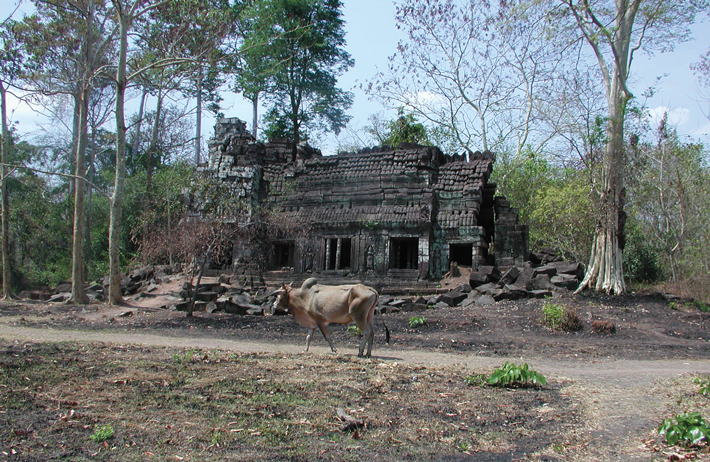 As part of an effort to win his subjects’ loyalty, the Khmer king Jayavarman VII, who ruled the Angkor Empire from A.D. 1181 to 1218, launched what may have been Southeast Asia’s first state-run health care system. Across his empire’s territory, which stretched from the southern tip of Vietnam, through Cambodia, Laos, and parts of Thailand, the king ordered the construction of 102 hospitals called arogyasala. At these institutions, dedicated staffers such as astrologists and sacrificers dispensed measures of rice, honey, camphor, ginger, and other medicinal substances to patients.
As part of an effort to win his subjects’ loyalty, the Khmer king Jayavarman VII, who ruled the Angkor Empire from A.D. 1181 to 1218, launched what may have been Southeast Asia’s first state-run health care system. Across his empire’s territory, which stretched from the southern tip of Vietnam, through Cambodia, Laos, and parts of Thailand, the king ordered the construction of 102 hospitals called arogyasala. At these institutions, dedicated staffers such as astrologists and sacrificers dispensed measures of rice, honey, camphor, ginger, and other medicinal substances to patients.
Jayavarman VII’s government also seems to have invested in nonclinical forms of wellness. Along a sophisticated network of roads crisscrossing the empire, archaeologists have uncovered evidence of buildings spaced some seven to nine miles apart that are believed to have sheltered weary travelers. “These hubs included stone temples called vahni-griha, or fire shrines, which were solely the domain of the gods,” says University of Illinois Chicago archaeologist Mitch Hendrickson. “Around the stone temple structures, there were buildings made of more ephemeral materials, where people could enter and rest.” Jayavarman VII appears to have made it a priority to provide a comfortable experience for travelers in order to encourage them to use the roads and to boost the prestige of the empire as it absorbed new territory and brought disparate cultures into the fold. “In some ways, the rest houses are the direct equivalent to modern highway rest areas,” Hendrickson says. “They were safe places to stop, to pray, and to feed your water buffalo and cattle. Eventually whole communities likely coalesced around them.”
Beauty
By BENJAMIN LEONARD
Tuesday, August 10, 2021
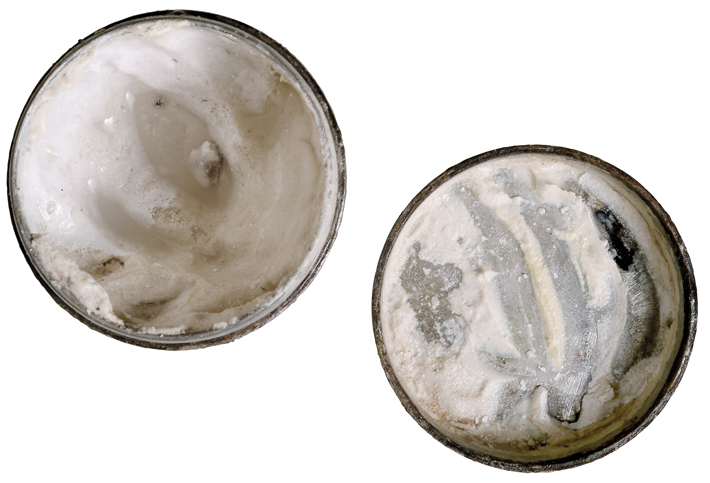
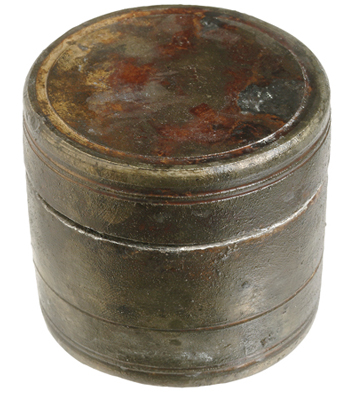 Like many people today, the Romans used makeup to reduce visible signs of aging and achieve glowing skin. Roman cosmetics ranged from homemade do-it-yourself remedies to high-end products, such as costly saffron eye shadow, that were targeted to a wealthy clientele. While ancient writers describe the ingredients and formulas for some cosmetics, very few examples of these products survive in the archaeological record. During excavations of an ancient boundary ditch at a Roman temple complex on the south bank of the Thames, archaeologists unearthed votive objects that included a small round tin canister dating to around A.D. 100 to 150. Upon opening the lid, they were surprised to find a white cream preserved inside the container— complete with two finger marks on the lid left by its last user.
Like many people today, the Romans used makeup to reduce visible signs of aging and achieve glowing skin. Roman cosmetics ranged from homemade do-it-yourself remedies to high-end products, such as costly saffron eye shadow, that were targeted to a wealthy clientele. While ancient writers describe the ingredients and formulas for some cosmetics, very few examples of these products survive in the archaeological record. During excavations of an ancient boundary ditch at a Roman temple complex on the south bank of the Thames, archaeologists unearthed votive objects that included a small round tin canister dating to around A.D. 100 to 150. Upon opening the lid, they were surprised to find a white cream preserved inside the container— complete with two finger marks on the lid left by its last user.
Chemical analysis of the substance revealed its three primary surviving components, allowing researchers to re-create the cream. Animal fat gave the concoction an oily texture that moisturized the skin, explains Museum of London curator Francis Grew, while starch produced a powdery sheen. The third component, however, was entirely unexpected—tin, a metal that no written source lists as an ingredient of Roman cosmetics. Rather than lead-based whiteners that were normally used in Roman makeup, the creators of this product used tin, which would have produced a similarly fair tone. “For women in Roman society, a white complexion signified that they didn’t go outdoors or do hard work, and that they had servants who attended to their needs,” Grew says. “Considering the possible ritual importance of this ditch, could it be that this was some sort of offering to the god by way of thanks for the remarkable properties of this cream?”
Perseverance
By MARLEY BROWN
Tuesday, August 10, 2021
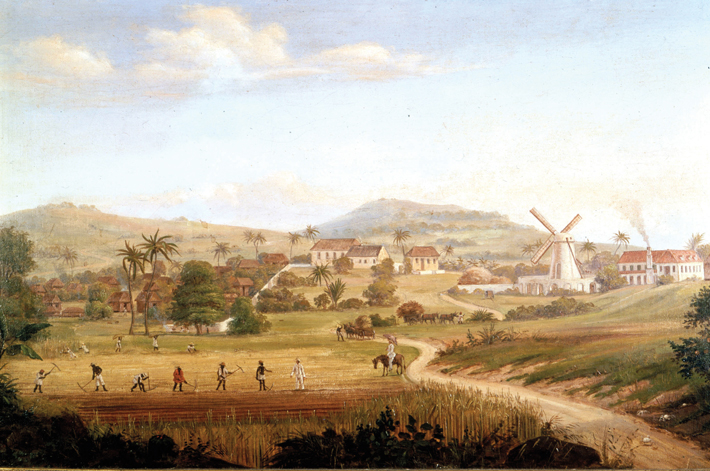 Even under excruciating circumstances, members of oppressed communities may seek wellness through resistance and survival. The Danish government abolished the slave trade as of 1803. From then until 1848, when enslaved people in the Danish West Indies were officially emancipated, plantation owners, colonial officials, and European physicians sought to maintain the captive labor force they could no longer replenish from Africa. At Cane Garden, a sugar plantation on Saint Croix that operated in the eighteenth and nineteenth centuries, enslaved people practiced self-care that contrasted with the medical treatment that was forced upon them. “Plantation hospitals were designed to keep enslaved people alive and to keep them working, which is a form of violence,” says San Francisco State University archaeologist Meredith Reifschneider, who led a team that excavated and analyzed botanical remains from the site of the plantation’s hospital building.
Even under excruciating circumstances, members of oppressed communities may seek wellness through resistance and survival. The Danish government abolished the slave trade as of 1803. From then until 1848, when enslaved people in the Danish West Indies were officially emancipated, plantation owners, colonial officials, and European physicians sought to maintain the captive labor force they could no longer replenish from Africa. At Cane Garden, a sugar plantation on Saint Croix that operated in the eighteenth and nineteenth centuries, enslaved people practiced self-care that contrasted with the medical treatment that was forced upon them. “Plantation hospitals were designed to keep enslaved people alive and to keep them working, which is a form of violence,” says San Francisco State University archaeologist Meredith Reifschneider, who led a team that excavated and analyzed botanical remains from the site of the plantation’s hospital building.
Reifschneider and her colleagues found evidence of a once-thriving kitchen garden where enslaved workers grew plant species that have both nutritional and therapeutic value. Some of these, including nightshades, purslane, and amaranth, may reflect knowledge of healing plants that people had brought to the West Indies from Africa. The team also uncovered extensive remains of pigs, goats, fish, and mollusks, as well as ceramic cooking pot fragments, suggesting that nurses nourished patients with stewlike meals. “We started to focus on the plants, animal resources, and cooking practices, and began looking at those things from a wellness standpoint,” says Reifschneider. “We realized the enslaved community focused on more than just physiological health, and worked toward fostering communal well-being.”
Advertisement
Advertisement
IN THIS ISSUE
Advertisement

Recent Issues
-
 May/June 2024
May/June 2024
-
 March/April 2024
March/April 2024
-
 January/February 2024
January/February 2024
-
 November/December 2023
November/December 2023
-
 September/October 2023
September/October 2023
-
 July/August 2023
July/August 2023
-
 May/June 2023
May/June 2023
-
 March/April 2023
March/April 2023
-
 January/February 2023
January/February 2023
-
 November/December 2022
November/December 2022
-
 September/October 2022
September/October 2022
-
 July/August 2022
July/August 2022
-
 May/June 2022
May/June 2022
-
 March/April 2022
March/April 2022
-
 January/February 2022
January/February 2022
-
 November/December 2021
November/December 2021
-
 September/October 2021
September/October 2021
-
 July/August 2021
July/August 2021
-
 May/June 2021
May/June 2021
-
 March/April 2021
March/April 2021
-
 January/February 2021
January/February 2021
-
 November/December 2020
November/December 2020
-
 September/October 2020
September/October 2020
-
 July/August 2020
July/August 2020
-
 May/June 2020
May/June 2020
-
 March/April 2020
March/April 2020
-
 January/February 2020
January/February 2020
-
 November/December 2019
November/December 2019
-
 September/October 2019
September/October 2019
-
 July/August 2019
July/August 2019
-
 May/June 2019
May/June 2019
-
 March/April 2019
March/April 2019
-
 January/February 2019
January/February 2019
-
 November/December 2018
November/December 2018
-
 September/October 2018
September/October 2018
-
 July/August 2018
July/August 2018
-
 May/June 2018
May/June 2018
-
 March/April 2018
March/April 2018
-
 January/February 2018
January/February 2018
-
 November/December 2017
November/December 2017
-
 September/October 2017
September/October 2017
-
 July/August 2017
July/August 2017
-
 May/June 2017
May/June 2017
-
 March/April 2017
March/April 2017
-
 January/February 2017
January/February 2017
-
 November/December 2016
November/December 2016
-
 September/October 2016
September/October 2016
-
 July/August 2016
July/August 2016
-
 May/June 2016
May/June 2016
-
 March/April 2016
March/April 2016
-
 January/February 2016
January/February 2016
-
 November/December 2015
November/December 2015
-
 September/October 2015
September/October 2015
-
 July/August 2015
July/August 2015
-
 May/June 2015
May/June 2015
-
 March/April 2015
March/April 2015
-
 January/February 2015
January/February 2015
-
 November/December 2014
November/December 2014
-
 September/October 2014
September/October 2014
-
 July/August 2014
July/August 2014
-
 May/June 2014
May/June 2014
-
 March/April 2014
March/April 2014
-
 January/February 2014
January/February 2014
-
 November/December 2013
November/December 2013
-
 September/October 2013
September/October 2013
-
 July/August 2013
July/August 2013
-
 May/June 2013
May/June 2013
-
 March/April 2013
March/April 2013
-
 January/February 2013
January/February 2013
-
 November/December 2012
November/December 2012
-
 September/October 2012
September/October 2012
-
 July/August 2012
July/August 2012
-
 May/June 2012
May/June 2012
-
 March/April 2012
March/April 2012
-
 January/February 2012
January/February 2012
-
 November/December 2011
November/December 2011
-
 September/October 2011
September/October 2011
-
 July/August 2011
July/August 2011
-
 May/June 2011
May/June 2011
-
 March/April 2011
March/April 2011
-
 January/February 2011
January/February 2011
Advertisement






